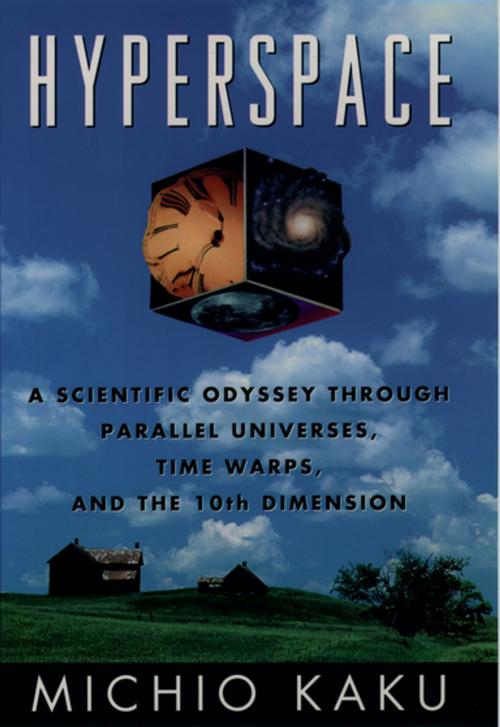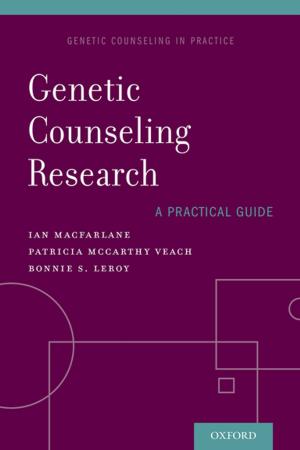Hyperspace
A Scientific Odyssey through Parallel Universes, Time Warps, and the Tenth Dimension
Nonfiction, Science & Nature, Science, Physics, Time, Cosmology, Astrophysics & Space Science| Author: | Michio Kaku | ISBN: | 9780199857760 |
| Publisher: | Oxford University Press | Publication: | March 24, 1994 |
| Imprint: | Oxford University Press | Language: | English |
| Author: | Michio Kaku |
| ISBN: | 9780199857760 |
| Publisher: | Oxford University Press |
| Publication: | March 24, 1994 |
| Imprint: | Oxford University Press |
| Language: | English |
Are there other dimensions beyond our own? Is time travel possible? Can we change the past? Are there gateways to parallel universes? All of us have pondered such questions, but there was a time when scientists dismissed these notions as outlandish speculations. Not any more. Today, they are the focus of the most intense scientific activity in recent memory. In Hyperspace, Michio Kaku, author of the widely acclaimed Beyond Einstein and a leading theoretical physicist, offers the first book-length tour of the most exciting (and perhaps most bizarre) work in modern physics, work which includes research on the tenth dimension, time warps, black holes, and multiple universes. The theory of hyperspace (or higher dimensional space)--and its newest wrinkle, superstring theory--stand at the center of this revolution, with adherents in every major research laboratory in the world, including several Nobel laureates. Beginning where Hawking's Brief History of Time left off, Kaku paints a vivid portrayal of the breakthroughs now rocking the physics establishment. Why all the excitement? As the author points out, for over half a century, scientists have puzzled over why the basic forces of the cosmos--gravity, electromagnetism, and the strong and weak nuclear forces--require markedly different mathematical descriptions. But if we see these forces as vibrations in a higher dimensional space, their field equations suddenly fit together like pieces in a jigsaw puzzle, perfectly snug, in an elegant, astonishingly simple form. This may thus be our leading candidate for the Theory of Everything. If so, it would be the crowning achievement of 2,000 years of scientific investigation into matter and its forces. Already, the theory has inspired several thousand research papers, and has been the focus of over 200 international conferences. Michio Kaku is one of the leading pioneers in superstring theory and has been at the forefront of this revolution in modern physics. With Hyperspace, he has produced a book for general readers which conveys the vitality of the field and the excitement as scientists grapple with the meaning of space and time. It is an exhilarating look at physics today and an eye-opening glimpse into the ultimate nature of the universe.
Are there other dimensions beyond our own? Is time travel possible? Can we change the past? Are there gateways to parallel universes? All of us have pondered such questions, but there was a time when scientists dismissed these notions as outlandish speculations. Not any more. Today, they are the focus of the most intense scientific activity in recent memory. In Hyperspace, Michio Kaku, author of the widely acclaimed Beyond Einstein and a leading theoretical physicist, offers the first book-length tour of the most exciting (and perhaps most bizarre) work in modern physics, work which includes research on the tenth dimension, time warps, black holes, and multiple universes. The theory of hyperspace (or higher dimensional space)--and its newest wrinkle, superstring theory--stand at the center of this revolution, with adherents in every major research laboratory in the world, including several Nobel laureates. Beginning where Hawking's Brief History of Time left off, Kaku paints a vivid portrayal of the breakthroughs now rocking the physics establishment. Why all the excitement? As the author points out, for over half a century, scientists have puzzled over why the basic forces of the cosmos--gravity, electromagnetism, and the strong and weak nuclear forces--require markedly different mathematical descriptions. But if we see these forces as vibrations in a higher dimensional space, their field equations suddenly fit together like pieces in a jigsaw puzzle, perfectly snug, in an elegant, astonishingly simple form. This may thus be our leading candidate for the Theory of Everything. If so, it would be the crowning achievement of 2,000 years of scientific investigation into matter and its forces. Already, the theory has inspired several thousand research papers, and has been the focus of over 200 international conferences. Michio Kaku is one of the leading pioneers in superstring theory and has been at the forefront of this revolution in modern physics. With Hyperspace, he has produced a book for general readers which conveys the vitality of the field and the excitement as scientists grapple with the meaning of space and time. It is an exhilarating look at physics today and an eye-opening glimpse into the ultimate nature of the universe.















